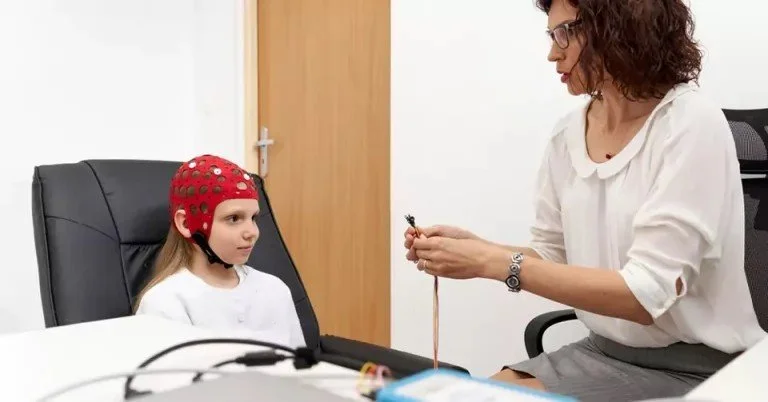qEEG and Neurofeedback Explained.
qEEG
At ICAN, Neurofeedback Therapy is tailored to each individual based on their symptoms and brainwave (EEG). We always start with data collection. This means recording brain signals using a test called qEEG, which measures brain activity.
A qEEG (quantitative EEG) shows a mix of brain waves at different speeds, called frequencies. Each type of waves is related to how groups of brain cells work together, and to how we think and feel.
Delta waves (0.5 to 4 Hz) are very slow waves. They happen when the brain is blocking out other signals, like during deep sleep.
Theta waves (4 to 8 Hz) are linked to feeling nervous or anxious.
Alpha waves (8 to 12 Hz) happen when a person is calm and focused, but not too alert.
Beta waves (16 to 30 Hz) are seen when a person is awake and paying close attention.
Gamma waves (30 to 100 Hz) are the fastest and are connected to thinking deeply, solving problems, and using higher-level brain skills.
Each wave type plays a role in different mental states and activities.
The second part is feature extraction. This entails a detailed analysis of the brain waves in relationship to the patient's symptoms. At ICAN, neurologists look at how brain waves change over time looking at various types of analysis, such as fast Fourier transform (FFT) and wavelet transform (WT), and then interpreting these waveforms by understanding how they can affect the patient's symptoms.
The third part is using this brain activity to create real-time feedback during therapy. Neurofeedback is a type of exercise. The goal is to train the brain to change the way it generates brainwaves, by eliminating or reducing certain frequencies and increasing other frequencies. For example, a person watches a video that keeps playing only when their brain activity stays in a certain range—like when theta waves go below 75%. This feedback helps the brain learn how to stay in a healthier state.

